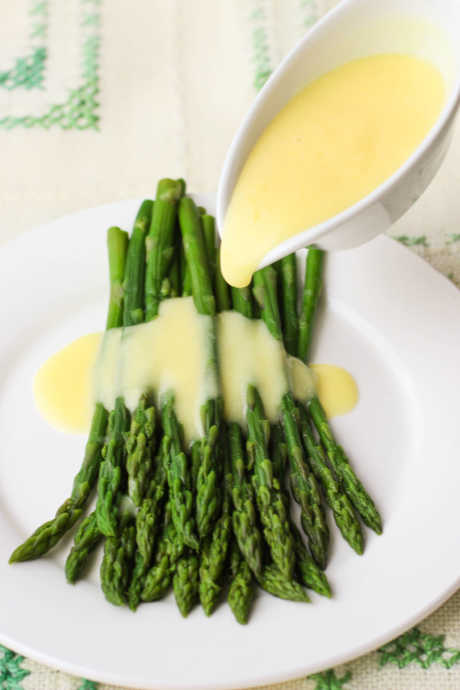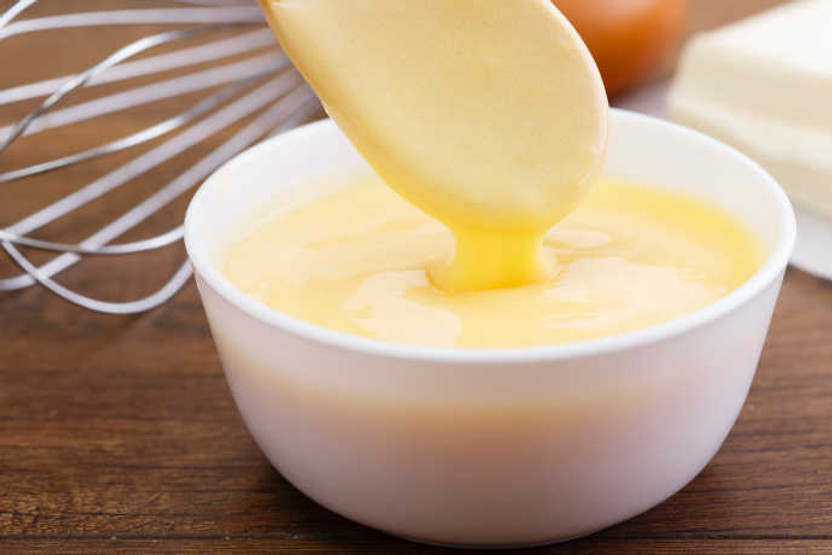Master the Challenge of Hollandaise Sauce
Posted by Julie on Apr 13th 2020
Perfecting Hollandaise sauce is one of those culinary milestones like making a roux, tempering eggs, or making an authentic French omelet. Perhaps best known as a topping for Eggs Benedict, it’s a mark of an accomplished cook who knows how to combine ingredients and control the cooking process. In this post, we’ll discuss what makes Hollandaise sauce so challenging, and how to maximize your chances of success.
Hollandaise Sauce: Tools and Ingredients
To make Hollandaise sauce, you’ll need eggs, water or vinegar, lemon juice, butter, and cayenne pepper. Your eggs and butter should be at room temperature, which will help them combine more easily. Working in a warm kitchen also aids in the process, but it’s not absolutely necessary.
One point of disagreement in making Hollandaise sauce concerns the butter: Does it need to be clarified? To clarify butter, you heat it and strain out the milk solids. Heating the butter allows excess water to evaporate, and removing the milk solids ensures you’re working with pure fat. Clarified butter blends more easily with the egg yolks. But if you want to skip the step of clarifying your butter, your sauce should still come together if you carefully follow the rest of the instructions.

Another point of disagreement concerns the cookware itself. Most recipes call for whisking the egg yolks in a double boiler. As you may recall from our post on using a double boiler, they’re helpful for tempering the heat, especially when working with delicate ingredients. However, Fine Cooking opts for using a Windsor pan directly on the burner. You can also use a saucier to help facilitate stirring and keep ingredients from getting caught between the base and sides of the pan.
Finally, you will definitely need a whisk to fully blend the ingredients and incorporate air into the mixture. No matter how vigorously you stir, a spoon will not suffice.
Hollandaise Sauce: Whisking, Part 1
First, you’ll separate the egg yolks from the whites. Save the whites for an egg wash or meringue. Whisk the egg yolks with water or vinegar, depending on your recipe. You can also add a dash of lemon juice at this point. Some recipes call for whisking over the heat, but we recommend starting on your counter for 30 seconds to a minute before moving to a double boiler or saucier.
Focus not only on combining the ingredients, but also on aerating them by lifting the whisk as you beat the mixture. The eggs will lighten in color and thicken up. Control the heat and keep your eggs moving. If the eggs heat up too much, they will scramble, and you’ll have to start over.
Hollandaise Sauce: Whisking, Part 2
Next, you’ll whisk the butter into the egg mixture. Most recipes we found call for removing the eggs from the heat during this step, and we agree: No sense taking the risk of scrambling your eggs.

Start adding the butter slowly, a little bit at a time. We suggest using a measuring spoon to drizzle limited amounts as you whisk. Be cautious, because if you add too much butter at once, it won’t mix properly with the eggs. Whisk with one hand as you add butter with the other hand. Keep the mixture moving, just as you did in part 1. As the sauce comes along, you can start to add more butter, but err on the side of caution. Once all the butter has been incorporated, whisk in the rest of the lemon juice and the cayenne pepper.
Hollandaise Sauce: Mistakes to Avoid
Why is Hollandaise sauce so fussy, with so much room for error? Culinary scientist Jessica Gavin explains that you’re making an emulsion, combining ingredients that don’t readily mix. You have to coax them together gently, under the right conditions.
The first mistake that can happen when making Hollandaise sauce is inadvertently scrambling your eggs. That’s why it’s important to control the heat and whisk constantly in step 1. If you use a double boiler, make sure the water doesn’t touch the pot or bowl above. Otherwise, it’s prone to overheating, and your eggs may scramble. You run the risk of curdling your eggs in step 2 as well, if your butter is too hot when you add it. Unfortunately, you can’t save your sauce if you overheat the eggs.
When you do add your butter, take it slowly. If you move too fast, the butter won’t mix into the eggs; it will sit on top. Picture how oil and vinegar tend to separate, with oil rising to the top. Hollandaise sauce will do the same if you don’t take your time. If you notice the butter starting to pool, whisk an ice cube or some cold heavy cream into your sauce to help facilitate the emulsion.
Hollandaise Sauce: What To Do With It

Congratulations! Now that you’ve successfully made Hollandaise sauce, how should you serve it? This is the easy part! Of course it’s an essential topping for Eggs Benedict, but it’s also a tasty sauce for vegetables. Drizzle it over freshly steamed asparagus or dip artichoke leaves into Hollandaise sauce. Use it to top frittatas or savory crepes. Hollandaise sauce is deliciously versatile!

